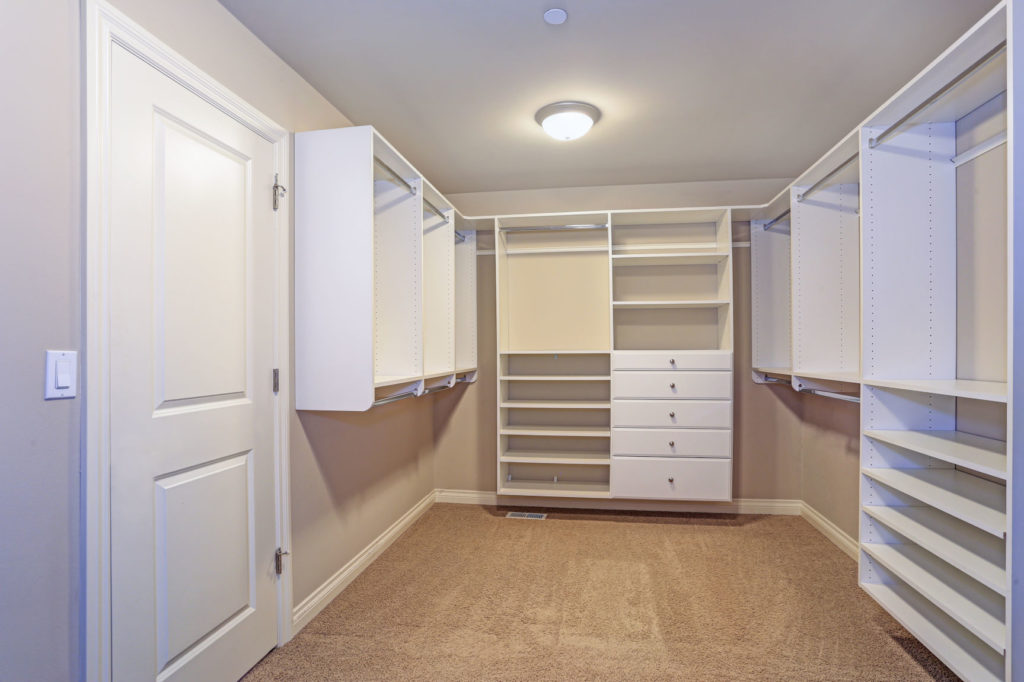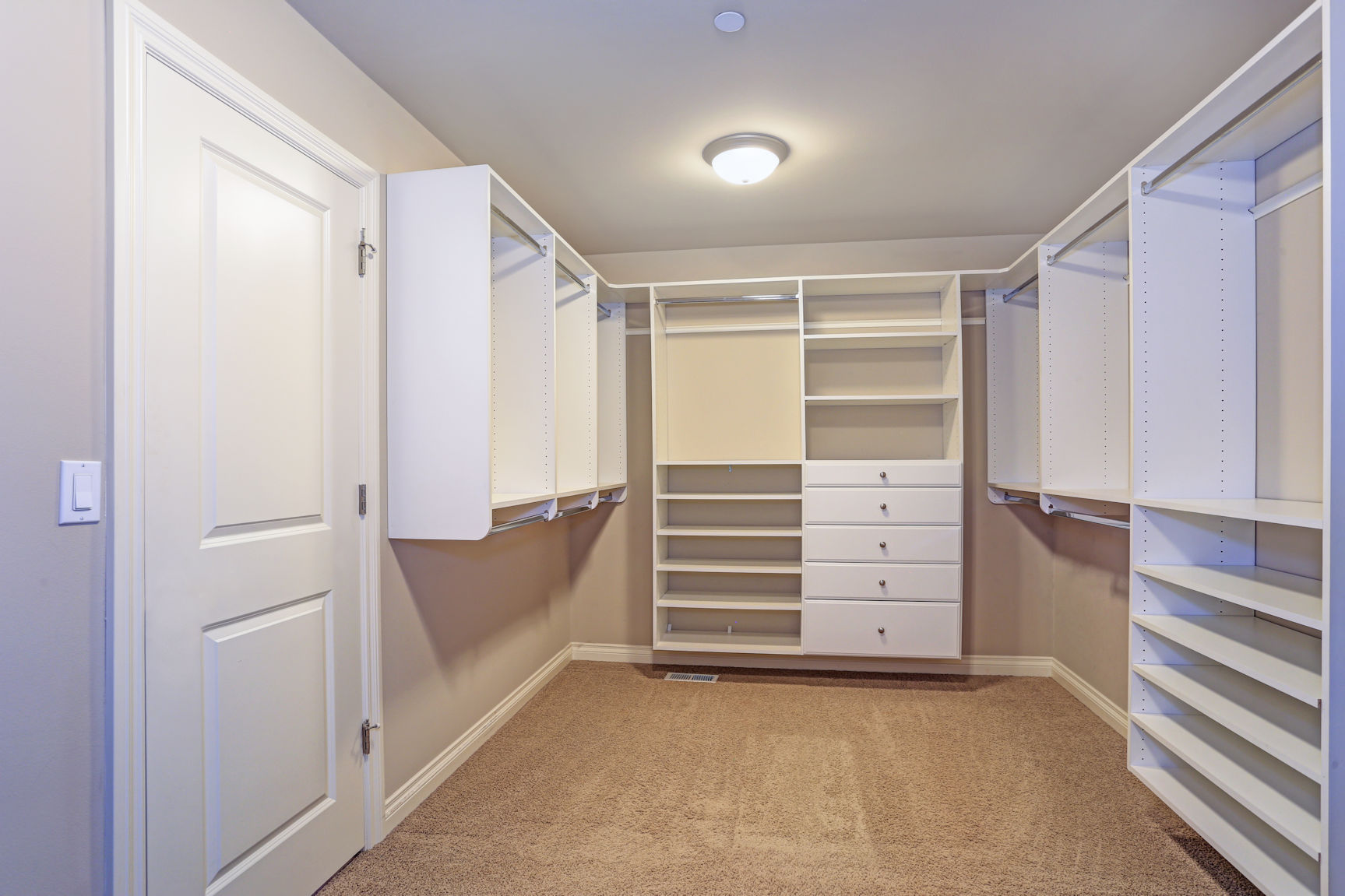Wednesday’s winner of the iDigHardware Yeti tumbler is Kevin Knippa of Texas Health and Human Services! Click here to see how you can register to win!
~~~
 Here’s the scenario:
Here’s the scenario:
Imagine a multi-family residential building under construction, that needs to comply with the 2018 International Building Code (IBC). The hardware specification calls for a dummy lever on the push side of the door leading from the master bedroom to a walk-in closet. The door also has a roller latch. There is no dummy lever or door pull specified for the pull side of the door. If someone closes the door while they are in the walk-in closet, they will have to try to open the door by reaching their fingers (or a coat hanger) under the bottom of the door.
Questions:
a) Where in the IBC does it state that this door must have a door pull or dummy lever on the closet side of the door?
b) If the door pull or dummy lever is required by the IBC, who is responsible for the added cost?
WWYD? And remember…if you leave a comment you are automatically entered to win a Yeti prize!
You need to login or register to bookmark/favorite this content.






I think this is such a basic requirement you have to look at the basic elements of the egress in it’s simplest form.
1003.6 says “A path of egress travel along a means of egress shall not be interrupted by a building element other than a means of egress component as specified in this chapter.” A door that cannot be opened presents an obstacle an therefore is “not means of egress” as defined by Chapter 10.
As for who pays…. The Owner pays. Even if the Architect had correctly identified a dummy pull on the inside of the door, the cost would have been the Owner’s in the original contract. The only “exposure” the Architect might be responsible for is remobilization by the person to install the dummy trim and any reinspection fee that might exist.
Interesting question and set up.
So you made me look.
Since it is multi family, it does fall under IBC.
IBC says exit required from room, area or space.
Since the requirement is there, than some type of door hardware is required. Otherwise in away, getting out could be considered special knowledge, or other.
Who pays, well read the contract, or the GC just does it so the building will pass.
A) Would “1010.1.9.6.1 Closet Doors: Closet doors that latch in the closed position shall be openable from inside the closet.” apply (IBC 2018)?
B) I think depending on how it was bid the responsibility could shift back and forth. If bid per plans and specifications (and not correct it so as not to fall behind the next bidder) as indicated by the architect and then questioned in the submittals you shouldn’t be on the hook as the supplier. But if there is a pre-bid addendum correcting the issue and it is missed in the bid then it would fall to the supplier. I feel that whoever calls it out first is not the one responsible in a generic sense, but would really depend on the contract and the relationship of the GC and the supplier.
Lori,
My guess:
1010.1.9.6.1 Closet doors. “Closet doors that latch in the closed positions shall be openable from inside the closet.” Teh IBC doesn’t specify hardware, though.
The building owner/developer will need to provide it in order for it to pass inspection and get a certificate of occupancy.
Common sense, today’s superpower!
I am not as familiar with residential code as I am with Educational Facilities, but I cannot see how it would be within code to not have anything such as a pull on the inside. Additionally, I would question how it pass code inspection, but it would be the responsibility of the builder to add it. In my opinion though it would be quicker to do it yourself and especially before you have young children that will like to shut you and/or themselves in the closet.
Seems like it might be a typo in the specifications and no one caught it.
As for who pays? The person / group that will suffer the greatest loss if something goes wrong when/ if a person is trapped.
Curious; how much per unit and how many units would be needed?
I would argue that, even though the IBC and IRC definition of a habitable space say that a closet is not considered habitable space, if the size of the closet is greater than 70 square feet, I would consider it a habitable space and in need of a means of opening the door. If the room is large enough to fully enter and close the door behind you, there should be a handle on the door to exit the room. However, I’m not sure, specifically, where in the code it says a handle is required.
It’s in the “Common Sense” chapter, as well as 1010.1.9 “.. egress doors shall be readily openable from the egress side without the use of a key or special knowledge or effort.” There are exceptions for the number of operations, etc. for R occupancies, especially when the door is an (italicized, and defined) “means of egress”, but “egress” is in plain text here and should be read as “the way out of the room”.
Ultimately, the Owner is responsible to pay, but they may be successful in arm-twisting others to be involved. Since nothing was shown on the closet side of the door, it’s not like there was any re-work cost involved.
1008.1.8 in the 2003 IBC states that…1008.1.8 Door operations. Except as specifically permitted
by this section egress doors shall be readily openable from
the egress side with out the use of a key or special knowledge
or effort.
2015 has the same language in 1010.1.9
By the way Lori, …Thanks for the Tumbler!! That’s not why I LOVE your posts but it’s a perk!!! 🙂
I can’t see why the 2018 would not have that same language but I don’t go by the 2018 yet!! — Kevin
IBC 2015 – 1010.1.9 – Except as specifically permitted by this section, egress doors shall be readily openable from the egress side without the use of a key or special knowledge or effort.
By definition its part of the means of egress
As far as the cost is concerned, that isn’t a code issue.
IBC 1010.1.9 Door Operations
Except as specifically permitted by this section, egress doors (and even a closet door is an egress door) shall be readily openable from the egress side without the use of a key or special knowledge or effort (such as having to get a coat hanger)
IBC 1010.1.9.6.1 – Closet doors
Closet doors that latch in the closed position shall be openable from inside the closet. (IBC doesn’t explicitly state “put a lever or knob on it” however this is implied)
A. I think IBC (2018) 1010.1.9 pretty well covers it. Furthermore, 1010.1.9.6.1. specifically says: “Closet doors that latch in the closed position shall be openable from inside the closet.” Glad that this language, which only seemed to pertain to an R-4 occupancy in the 2015 IBC, was made universally applicable in 2018!
B.The second question is harder. Although the architect omitted a code-required item in the contract documents, if anyone brings up this deficiency, the Owner gets value from adding the additional hardware that was not in the CDs. Therefore, under most circumstances, I would say the Owner pays for the overlooked item, as it was not the Contractor’s responsibility to provide that per the CDs, and the Architect does not certify that the drawings and specs are 100% perfect in regards to code compliance. Although the Contractor is not required to ascertain that the contract documents are in conformance with all applicable bodes, a case could me made that if the Contractor KNEW this was a code violation and did NOT report the deficiency to the Architect, per AIA General Conditions and AIA Owner-Contractor contractor documents, the Contractor shall then bear the costs. (i.e. knowingly not bringing up a code deficiency about which he/she was aware.) Would like to hear other’s opinions as well!
Will guess someone got locked in a closet.
Went from R-4 to all closets!!!!
1010.1.9.6.1Closet doors.
Closet doors that latch in the closed position shall be openable from inside the closet.
Pretty nice closet to go cheap on not having more than a roller latch, guess they spent all their money on the high quality hinge pin door stop.
Everyone has best me to the code answers but my comment on who pays, it never seems to be the person that was to lazy or to cheap to provide something so minimal and needed.
Maybe the room was being listed as a safe room also
It’s the “common sense” code.
As far as who should pay for it – that would be the spec writer that omitted it from their schedule. Although, most scopes and/or contracts will have a statement that puts the responsibility back on the hardware supplier.
I believe this code should apply to the above, “1010.1.9.6.1 Closet Doors.”
Who should have specified this is the specification writer, but the home owner needs to catch these mistakes that happen like this.
Definitely in the “common sense” code that you don’t design any occupied space that can trap someone in by design, as well as the couple codes listed in comments that would apply, but who pays? It may cost the architect some trust of the building owner, but it seems that the building owner would need to foot the bill for anything that is required to meet code so they can open their building and get some business.